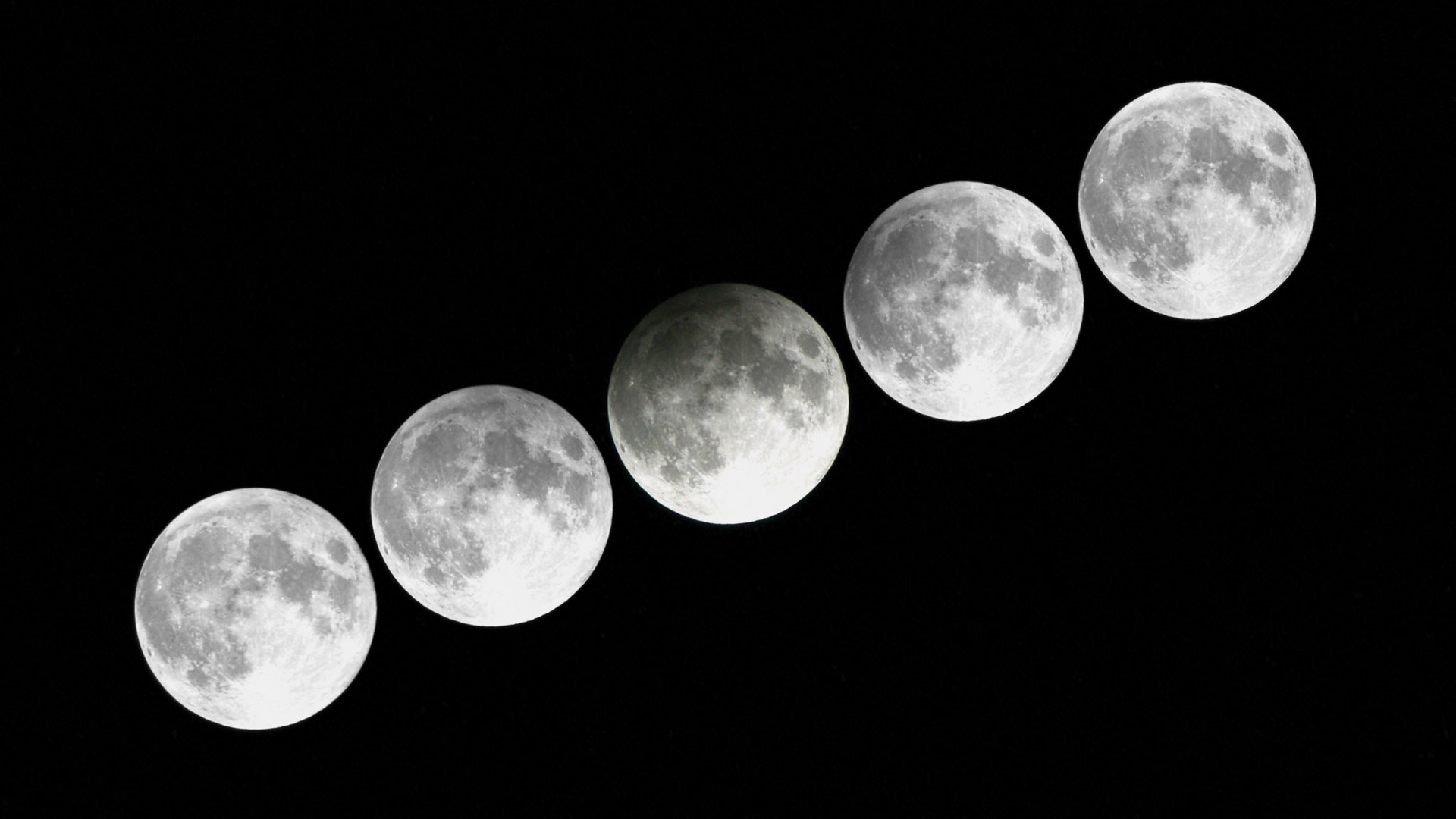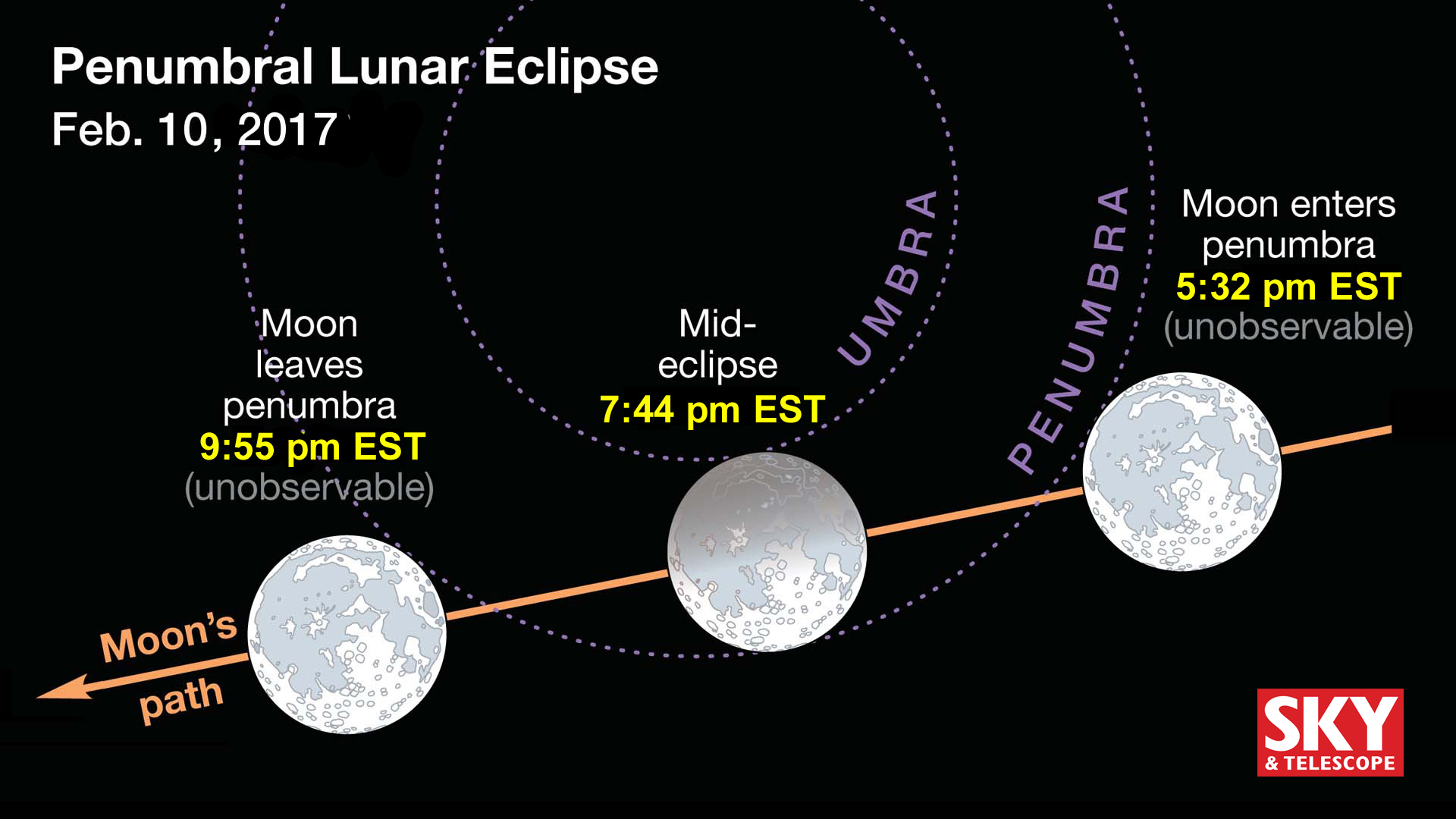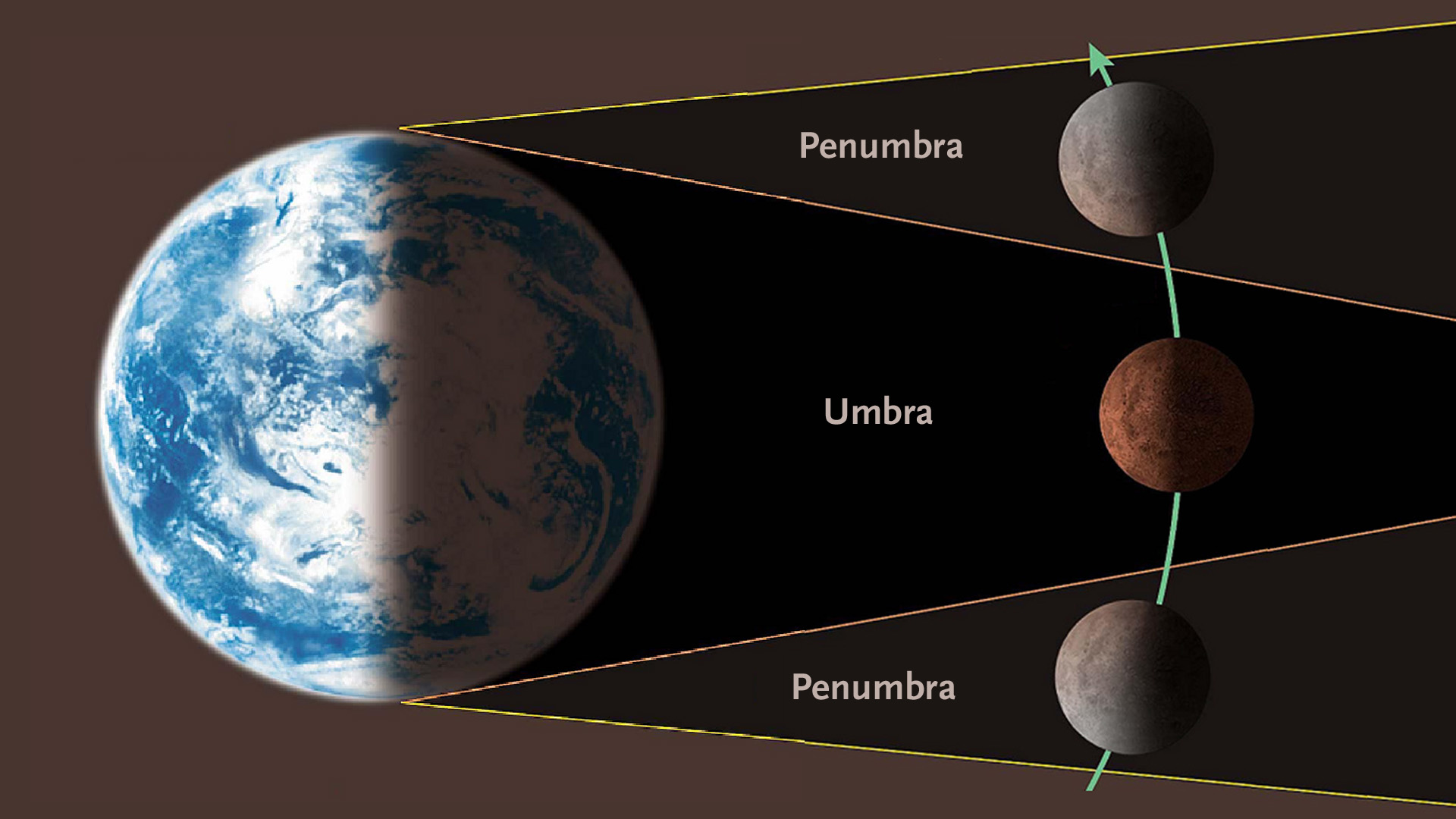A Sky & Telescope press release
Contacts:
Alan MacRobert, Senior Editor, Sky & Telescope
855-638-5388 x22151, [email protected]
Kelly Beatty, Senior Editor, Sky & Telescope
855-638-5388 x22168, [email protected]
| Note to Editors / Producers: This release is accompanied by publication-quality illustrations. |
Lunar eclipses are enjoyable celestial events that can be seen from a wide geographic area. But we haven't experienced a total lunar blackout since September 2015, and the next one won't come until January 31, 2018.
In the meantime, skygazers can enjoy a special kind of lunar eclipse taking place on Friday night, February 10th. Instead of plunging into the dark inner core of Earth's shadow (called the umbra), the Moon will pass deeply into Earth's dusky outer shadow, the penumbra. Its northern edge will miss the umbra by only about 100 miles (160 km), or 3% of the Moon’s diameter. In fact, were the Moon to slide just 27 miles (44 km) closer, the entire lunar disk would briefly lie inside the penumbra.
So a penumbral lunar eclipse is essentially a tease — but this week's will be about the best one possible. Although no portion of the Moon will become really dark, anyone who looks up when the eclipse is near its maximum will easily see the dusky penumbral shading.
The table below provides key times for this event. Those in eastern North America (and all of South America) can observe the eclipse in its entirety. The farther west you live, however, the lower the Moon will be in the eastern sky. As seen from the Midwest, the eclipse will be at its maximum near or soon after moonrise and sunset; in the Far West, moonrise and sunset don't occur until after the eclipse has peaked. In Europe, Africa, and western Asia, the event takes place early on February 11th, with the Moon high in a dark sky.
| Key Times for the Penumbral Lunar Eclipse on February 10, 2017 (* February 11) |
|||||
| Eclipse event | UT | EST | CST | MST | PST |
| Moon enters Penumbra | 22:32 | 5:32 p.m. | — | — | — |
| Penumbra first visible? | 23:14 | 6:14 p.m. | 5:14 p.m. | — | — |
| Mid-eclipse | 0:44* | 7:44 p.m. | 6:44 p.m. | 5:44 p.m. | — |
| Penumbra last visible? | 2:14* | 9:14 p.m. | 8:14 p.m. | 7:14 p.m. | 6:14 p.m. |
| Moon leaves penumbra | 2:55* | 9:55 p.m. | 8:55 p.m. | 7:55 p.m. | 6:55 p.m. |
What to Look For
Lunar eclipses are slow-motion events. This one lasts nearly 4½ hours, with its midpoint at 7:44 p.m. Eastern Standard Time (0:44 Universal Time on February 11th). "The outer part of Earth’s penumbra is so pale that you won’t notice anything until the Moon’s edge has slid at least halfway in," cautions Alan MacRobert, a senior editor at Sky & Telescope magazine. "So start looking about 90 minutes before mid-eclipse."
The shading will begin to show on the Moon’s left side. In North America, only from the northeastern U.S. and eastern Canada will the Moon be well up in time to watch for this. Any haze or thin cloudiness will make seeing this early onset more difficult. With time, the dusky shading will become more prominent, and as mid-eclipse approaches, the lopsidedness of the Moon’s illumination will be totally obvious. Watch the shading shift and become more concentrated toward the northern limb, the portion of the Moon that is passing closest to the umbra.
As the Moon rises higher and any remaining twilight fades down, the process runs in reverse. This is the part of the eclipse that most Americans will be able to see best. With luck, a careful observer will be able to detect a trace of shading by eye for about an hour — perhaps a little longer — after mid-eclipse. "You can even use this event to check the acuteness of your visual perception," notes S&T senior editor Kelly Beatty.
Sky & Telescope is making publication-quality illustrations available to our colleagues in the news media. Permission is granted for nonexclusive use in print and broadcast media, as long as appropriate credit (as noted in the caption) is included. Web publication must include a link to SkyandTelescope.com.

Hong Kong Space Museum

Sky & Telescope diagram

Sky & Telescope illustration
For skywatching information and astronomy news, visit SkyandTelescope.com or pick up Sky & Telescope, the essential guide to astronomy since 1941, with subscribers in more than 100 nations. Sky & Telescope and SkyandTelescope.com are divisions of F+W, a content and ecommerce company. F+W also publishes SkyWatch (an annual guide to the night sky) as well as books, star atlases, posters, prints, globes, apps, and other fine astronomy products.
 1
1